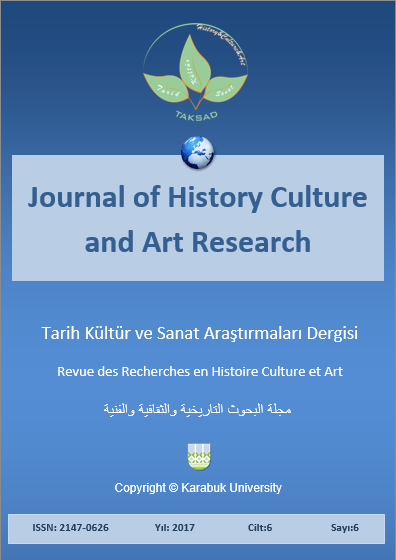Creativity of Ashugs: An Investigation on Ashug Culture in Azerbaijan
DOI:
https://doi.org/10.7596/taksad.v6i6.1333Keywords:
Shirvan, Folklore, Ashug, Azerbaijan.Abstract
Ashug art forming one of the fundamental, private branches of Azerbaijan folklore is the actual problem of modern folklore-study investigating ashug sphere, schools and artisans. Ashug is the event of folk activity existing in ancient times with different names. In the structure of this tradition the important historical layers of the folk culture as the ancient cult, belief, art find its reflection. Shirvan is one of the ancient culture centers which has its own historical evolution and development stages. Shirvan had historical relations with the developed cultural states of the ancient world and was acquainted with main achievements of East and West culture. Azerbaijan ashug poem of the 19th century was significant with the important event. The performance style of woman masters appeared in ashug activity. For the first time this tradition showed itself in Shirvan, then it spread in other ashug spheres. The woman ashugs in Shirvan had different characters than other ashugs. They were the masters displaying interest to the folk poem, knowing the classic style, creating gazal and gasidas in Aruz meter (classical poetic meter in oriental poetry) and writing some poems in such style. Shirvan sphere and Shirvan ashug activity saving the richest examples of Azerbaijan culture and folklore, at the same time different ashug masters of Shirvan region haven’t been the system subject of the investigation. We can meet the thoughts and considerations about Shirvan folklore sphere and the life of different ashugs in the limited works. But in the new period the place and the role of ashug in the ashug culture and folklore tradition haven’t been cleared up.
References
Galimullin, F. G.; Galimullina A. F. & Mingazova, L. I. (2016). Сommon roots, common spirituality: literary relationships of the Tatar and Azerbaijani literature in the context of the dialogue of cultures. The Social Sciences, 11(16), 3940-3945.
Jafarzade, A. (1991). Azerbaijan ashug women and poetesses. Baku: Ganjlik.
Jafarzade, A.; & Ganiyev, S. (1994). Shirvan poetesses (Collection). Baku.
Mingazova, L. I.; Galimullin, F. G. & Galimullina, A. F. (2014). Folk heroes in the poetry of the people of the Volga and Ural regions. Journal of Language and Literature (Baku, Azerbaijan), 5(4), 252 -555.
Mirza, A. (2007). Shirvan ashug activity (the history of formation and development). Baku, Elm.
Mumtaz, S. (1927). Folk poets. Baku.
Nabiyev, A. (2004). Azerbaijan ashug schools. Baku: Nurlan.
Niyazli, B. (2005). Fatma Shirvanli. “Bizim yol” newspaper. 13.05.2005.
Sayfulina, F. S. & Karabulatova, I. S. (2014). European studies of barabin Tatar folklore: the role of investigations of the German scientist V.V. Radlov. Life Science Journal, 11(9s), 116-119.
Sayilov, G. (2007). Modern Shirvan ashugs. Baku.
Tahmasib, M. H. (1978). Nasimi and folk poetry, “Edebiyyat ve injesenet” newspaper. 11.08.1978.
Downloads
Published
How to Cite
Issue
Section
License
All papers licensed under Creative Commons 4.0 CC-BY.- Share — copy and redistribute the material in any medium or format
- Adapt — remix, transform, and build upon the material for any purpose, even commercially.
Under the following terms:
Attribution — You must give appropriate credit, provide a link to the license, and indicate if changes were made. You may do so in any reasonable manner, but not in any way that suggests the licensor endorses you or your use.
- No additional restrictions — You may not apply legal terms or technological measures that legally restrict others from doing anything the license permits.







